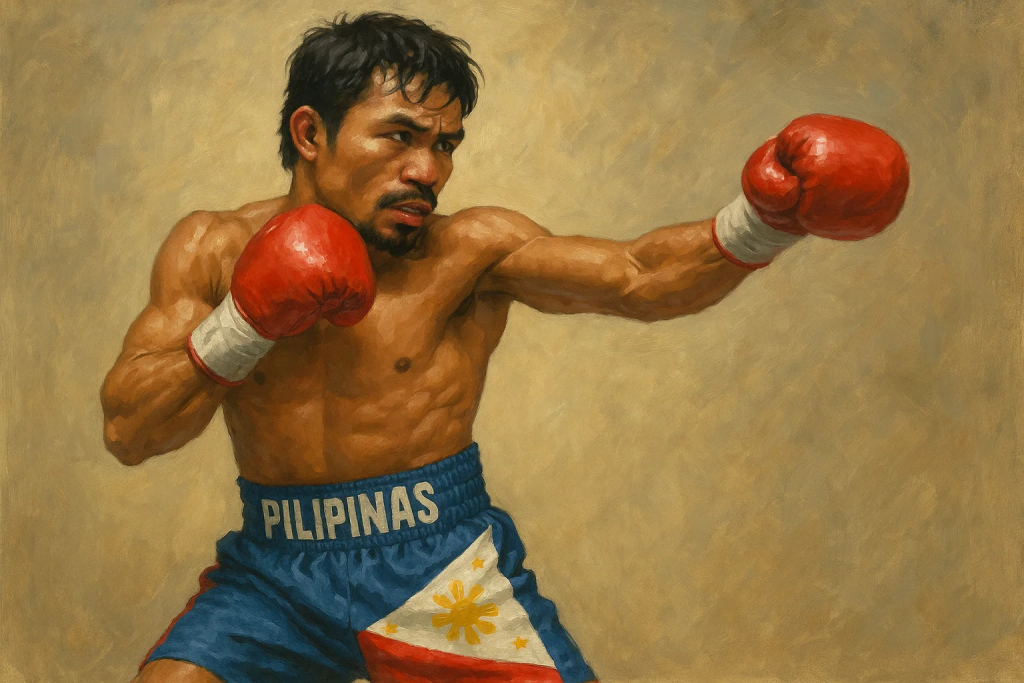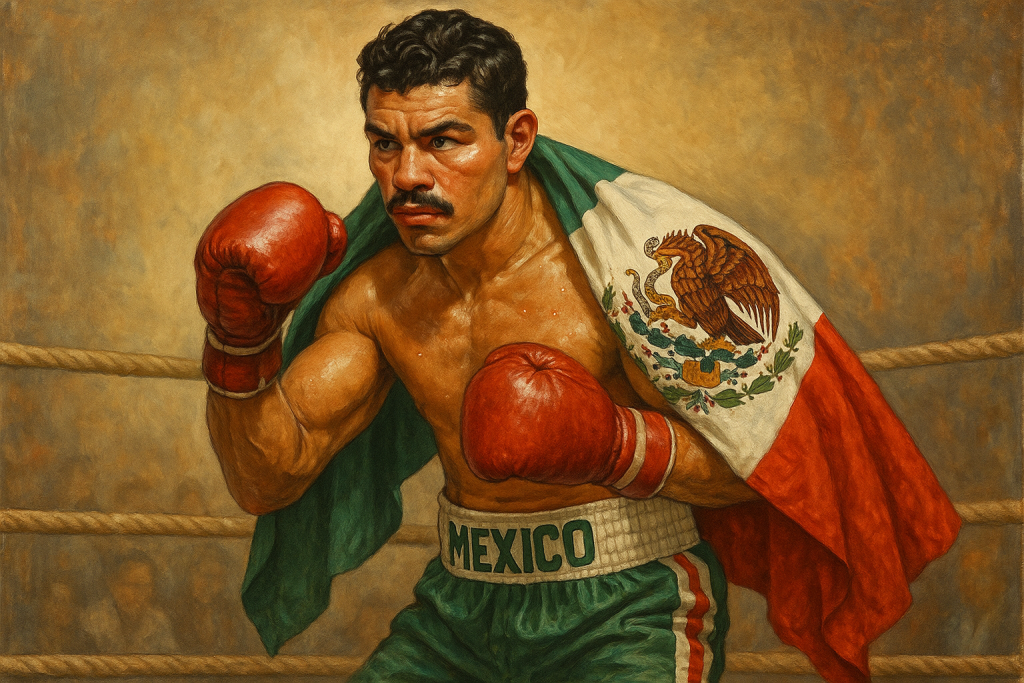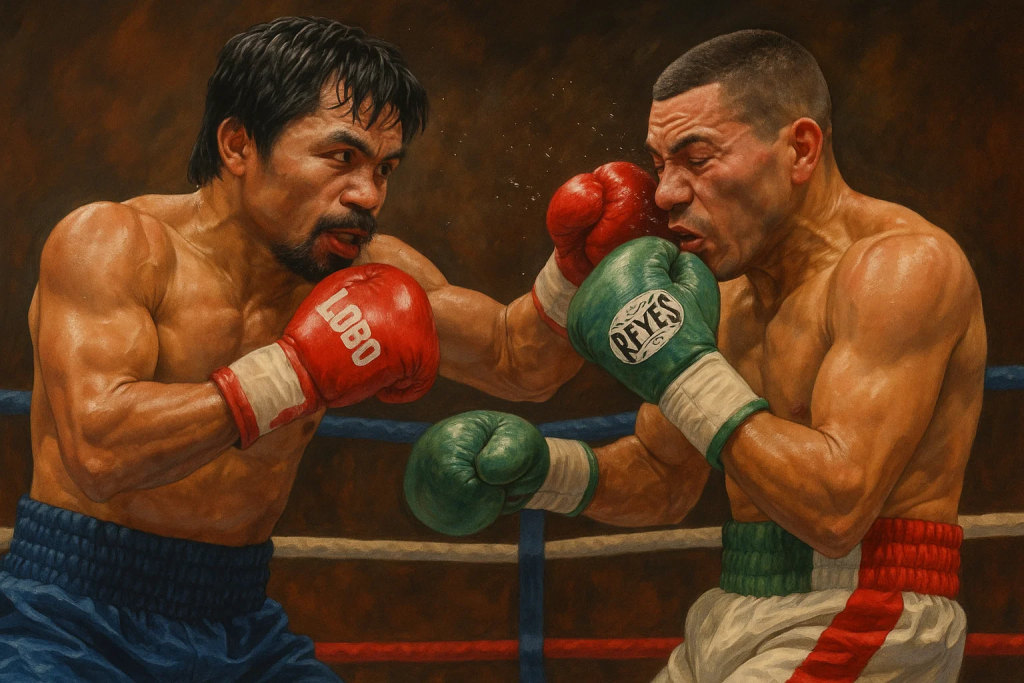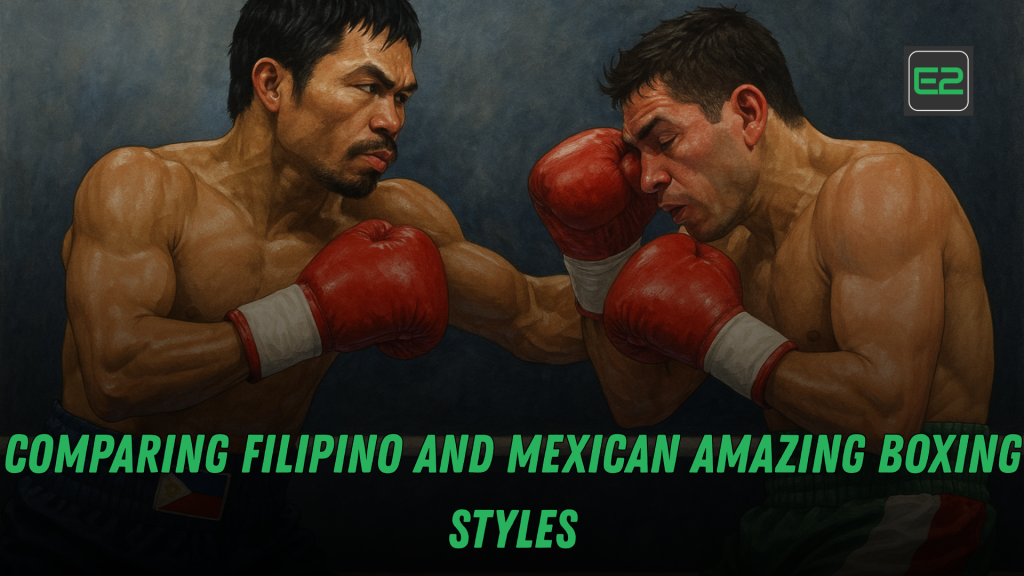Boxing has long been a staple of combat sports, and Filipino and Mexican boxing styles have produced some of the greatest fighters the world has ever seen. From Manny Pacquiao‘s explosive speed to Julio Cesar Chavez‘s relentless pressure, both nations have made their mark on the sport in unique ways. But what exactly sets these two boxing styles apart?
In this article, we’ll break down the characteristics of both the Filipino and Mexican boxing styles, explore their strengths, weaknesses, and how these fighting techniques have shaped the sport of boxing. By understanding these styles, fans and aspiring boxers can appreciate the nuances that make Filipino and Mexican fighters exceptional.
Table of Contents
1. Filipino Boxing Style: Speed, Angles, and Precision
The Manny Pacquiao Effect
The Filipino boxing style is often characterized by its speed, incredible footwork, and ability to change angles effortlessly. This style became widely recognized thanks to legendary fighters like Manny Pacquiao, who transformed from a small flyweight fighter to an eight-division world champion.
Key characteristics of the Filipino boxing style include:
- Fast Paced Attacks: Filipino boxers are known for their explosive speed. They rely on quick combinations that overwhelm their opponents.
- Unpredictability: One of the hallmarks of the Filipino style is its ability to move unpredictably. Fighters often employ lateral movement, switching stances, and throwing punches from unexpected angles to confuse and outmaneuver their opponents.
- Counterpunching: Filipino boxers are skilled counterpunchers, often waiting for their opponent to throw the first punch and then responding with lightning-fast counters.
- Aggression and Pressure: While Filipino boxers are known for their precision and speed, many are also extremely aggressive. This mix of precision with aggression allows them to dictate the pace of the fight.
Manny Pacquiao is perhaps the best example of the Filipino boxing style. His ability to dart in and out of range, combined with his power in both hands, made him nearly impossible to hit cleanly. Pacquiao’s footwork and speed were the main tools in his arsenal, allowing him to fight above his weight class and defeat world champions from several divisions.
Strengths of Filipino Boxers:
- Lightning Fast Reflexes: Their speed allows them to slip punches and counter effectively.
- Versatility: Filipino boxers can adapt quickly in the ring, switching styles and tactics depending on their opponent.
- Conditioning: Filipino fighters are often conditioned to go the distance, showcasing incredible stamina throughout the fight.
Weaknesses:
- Defensive Gaps: In some cases, the aggressive nature of Filipino boxers can leave them open to counterattacks, especially if they rush in too quickly.

2. Mexican Boxing Style: Pressure, Durability, and Power
The Julio Cesar Chavez Influence
Mexican boxing has a long history of producing tough, relentless fighters. At the heart of the Mexican boxing style is relentless pressure, iron-clad durability, and immense punching power. This style has been made famous by iconic figures like Julio Cesar Chavez and Saul “Canelo” Alvarez, who are known for their ability to absorb punishment while dishing out their own in return.
Key characteristics of the Mexican boxing style include:
- Pressure Fighting: Mexican boxers excel in applying constant pressure to their opponents. They don’t just stand in front of you; they cut off the ring, forcing their opponent into uncomfortable positions.
- Inside Fighting: Mexican fighters are well-known for their ability to work on the inside, throwing powerful body punches and uppercuts while wearing their opponent down.
- Durability: Mexican boxers are typically extremely durable and tough, able to take punches and keep coming forward. This resilience is a key part of their mentality.
- Technical Skills: Despite their emphasis on pressure, many Mexican boxers are extremely skilled technically. They possess a solid defense, good head movement, and excellent counterpunching skills when needed.
Julio Cesar Chavez is the epitome of the Mexican boxing style. Known for his unmatched work rate, Chavez wore his opponents down with relentless attacks, all while showcasing exceptional stamina and toughness. His ability to withstand punches and continue applying pressure made him a nightmare for anyone in the ring with him.
Strengths of Mexican Boxers:
- Relentless Pressure: Mexican fighters can break down their opponents with continuous pressure and physicality.
- Durability: The ability to withstand hits and continue forward makes Mexican boxers difficult to defeat.
- Effective on the Inside: Their ability to work in close quarters with powerful body shots is a hallmark of the Mexican style.
Weaknesses:
- Slower Footwork: The Mexican style often requires boxers to stand toe-to-toe, which can be a disadvantage against faster opponents who rely on movement and angles.
- Vulnerability to Fast Counterpunchers: While the pressure style is highly effective, it can leave fighters open to quick counters from faster, more elusive opponents.

The Business Side of Boxing in the Philippines: A Glimpse into a Thriving Industry
3. Comparing the Two Styles: Filipino vs. Mexican Boxing
Speed vs. Power
- Filipino Boxing tends to focus on speed, with quick combinations and high work rate. Fighters like Pacquiao often use their agility and footwork to create angles, delivering punches that come from different directions.
- Mexican Boxing, on the other hand, is about pressure and power. Mexican boxers like Chavez wear their opponents down by constantly forcing them to fight at a fast pace, wearing them out with heavy body shots and consistent aggression.
Aggression vs. Movement
- The Filipino style uses fluid movement to outmaneuver opponents, often making it difficult for them to land clean shots.
- The Mexican style, however, is more about staying in the pocket and pressuring the opponent with aggressive forward movement. It is a style built on physicality and toughness, where staying close to the opponent can lead to damaging exchanges.
Durability vs. Elusiveness
- Mexican fighters are known for their durability—the ability to absorb punishment and keep coming forward. Their physicality allows them to outlast opponents who may be technically more skilled but lack the stamina to keep up with the pressure.
- Filipino boxers are known for their elusiveness, using speed and agility to avoid punishment while landing accurate counters. Pacquiao, for example, rarely stood still in the ring, constantly changing angles and attacking from unexpected places.
4. Who’s More Effective?
The effectiveness of each style depends on the situation and the opponent. Filipino boxing is ideal against opponents who rely on their physicality, while Mexican boxing excels against opponents who may be more elusive but lack the same resilience.
Fighters like Pacquiao, who can move with incredible speed and power, often have an advantage over pressure fighters when it comes to strategic movement.
On the other hand, fighters like Canelo Alvarez and Julio Cesar Chavez demonstrate that pressure can overwhelm even the most skilled fighters, especially when combined with exceptional defense and counterattacking skills.

5. Celebrating the Best of Both Worlds
Both Filipino and Mexican boxing styles bring something unique to the sport, representing two of the most exciting and influential boxing cultures in the world. While Filipino boxers shine with their agility, speed, and counterpunching skills, Mexican boxers captivate fans with their relentless pressure and incredible durability. Each style offers an insight into the mental and physical attributes that define these warriors inside the ring.
Whether you are a fan of fast, evasive fighting or relentless pressure and power, Filipino and Mexican boxing will always deliver some of the most thrilling matchups in the history of the sport. By understanding the differences between these styles, fans can better appreciate the unique strategies and techniques that make these fighters true legends.
What are your thoughts?
Explore the world of Filipino and Mexican boxing and discover the unique styles that have defined some of the greatest champions in boxing history. Stay informed and continue supporting your favorite fighters as they bring these incredible styles to the ring!
Frequently Asked Questions (FAQs)
1. What are the key differences between Filipino and Mexican boxing styles?
The key difference lies in Filipino boxing’s focus on speed, agility, and angles, while Mexican boxing is centered around relentless pressure, toughness, and power.
2. Who is the best example of the Filipino boxing style?
Manny Pacquiao is widely regarded as the best example of the Filipino boxing style, showcasing incredible speed, footwork, and counterpunching.
3. Who exemplifies the Mexican boxing style?
Julio Cesar Chavez and Saul “Canelo” Alvarez are two prominent fighters who embody the Mexican boxing style, known for their durability, pressure, and power.
4. Which boxing style is more effective?
Both styles are highly effective, depending on the opponent. Filipino boxers excel against pressure fighters with their speed and elusiveness, while Mexican boxers thrive in breaking down opponents with relentless pressure and durability.
5. How do Filipino and Mexican fighters train differently?
Filipino fighters typically focus on speed, agility, and precision, while Mexican fighters emphasize conditioning, endurance, and offensive pressure. Both require intense physical preparation but with different tactical approaches.
